In Intel Labs
Recently, I happened to visit the cultural capital, namely, in the St. Petersburg division of Intel Labs , a special-purpose laboratory. Unfortunately, they told there and showed not so much as they would like, but still, they told something.
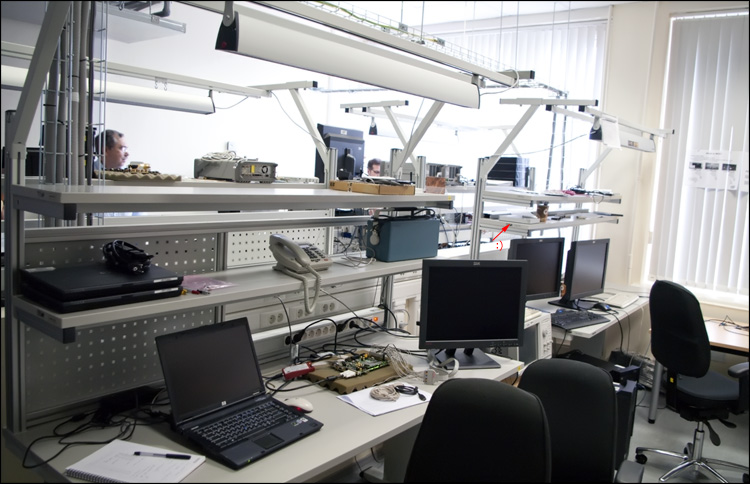
It all started with a speech by Christian Morales , Vice President, Sales and Marketing Group, General Manager of Operations in the EMEA region. He flew to our cold lands for a number of meetings at the Economic Forum , but before the event, he told us about what the term "Intel Labs" really is.

')
It was about a more global Intel Labs Europe (ILE), which, in fact, is a large interconnected network of research laboratories, developing various innovations and promoting their practical implementation. “The development of innovative and“ breakthrough ”technologies that bring new opportunities in the context of the ongoing“ digital ”revolution is like a nutrient medium for the development of the company's business.”
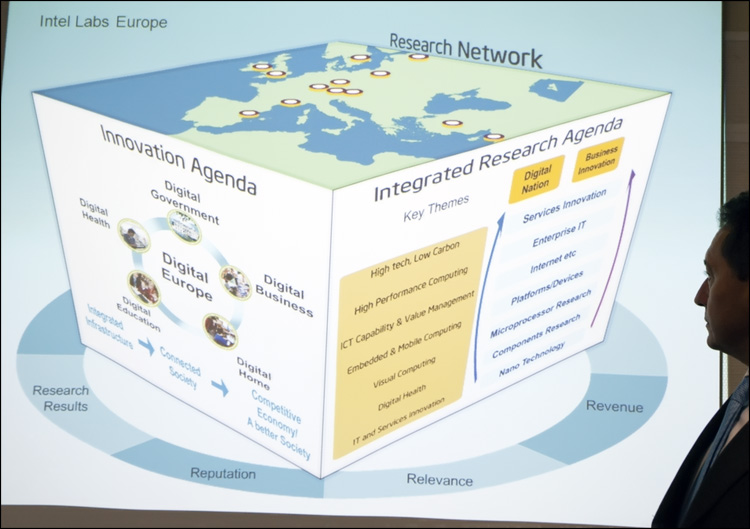
Currently, research laboratories are located in more than 10 large countries and more than 900 research workers are involved in a very wide range of different developments, including architectures of future computing systems, devices and platforms; telecommunications and media processing; research in the field of circuits and semiconductors; optical methods for storing and transmitting information; human-computer interfaces, high-performance systems, and more.
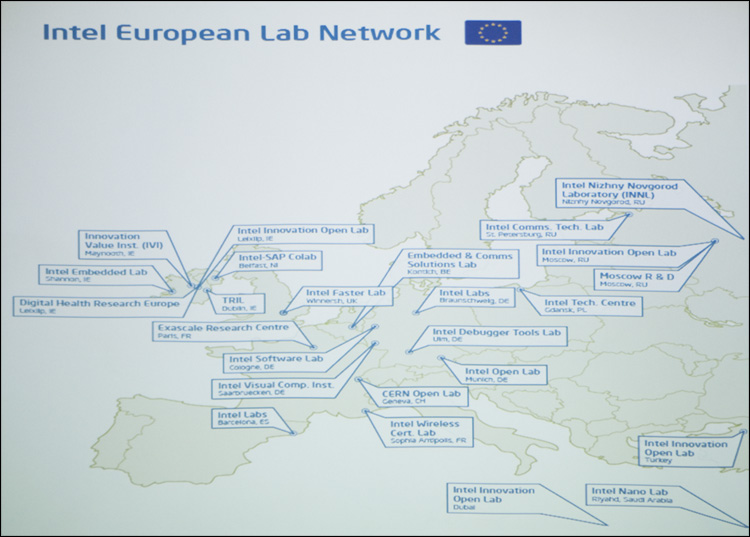
Developments are carried out in a large number of areas, but their main vectors can be seen in the photo (clickable):

Accordingly, in each of the laboratories something different is being developed, however, it is also available to other laboratories.

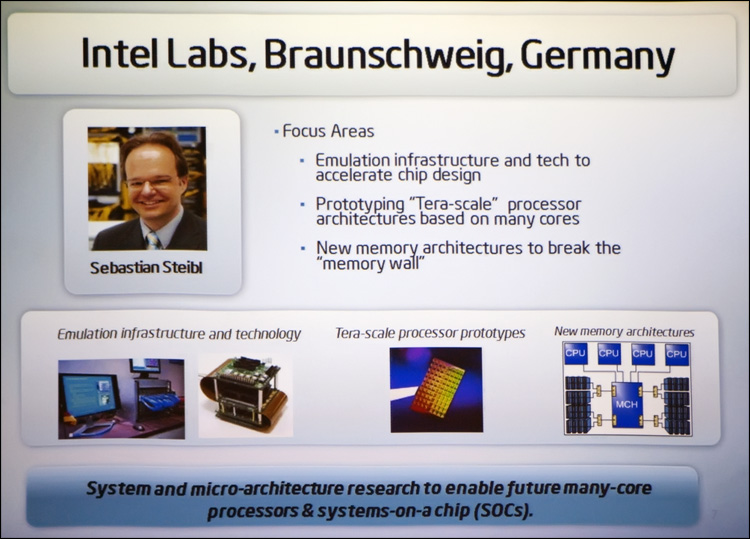
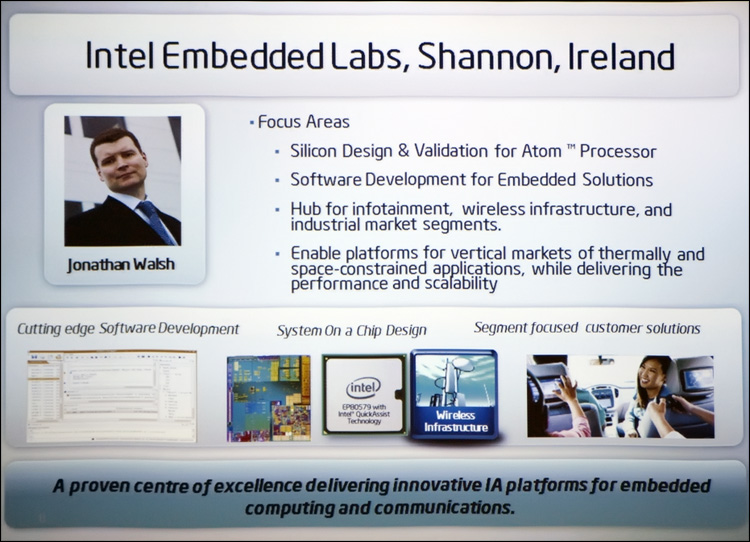


Moreover, the development is carried out not only around the "mature" technologies that are close to the release of finished products, but also over the so-called "blue-sky" projects, which include promising projects that are currently not possible to implement. As an example, the technology was given to recognize human thoughts, as well as their ability to influence something.
The St. Petersburg Intel Lab employs about 30 people and Oleg Semenov is their manager - he said that over the entire existence of the laboratory, more than 65 patents were filed, and the number of applications for inventions has long exceeded 200. Some of the “fields” of their activities are tools for system-on-chip (SoC) synthesis and programming, efficient accelerator architectures for various applications, video signal compression and processing algorithms, development of experimental WiFi / WiMAX chips, and a promising interface, introduced Intel at the beginning of this year at CES2010. Yes, yes, it's about the Intel Wireless Display .
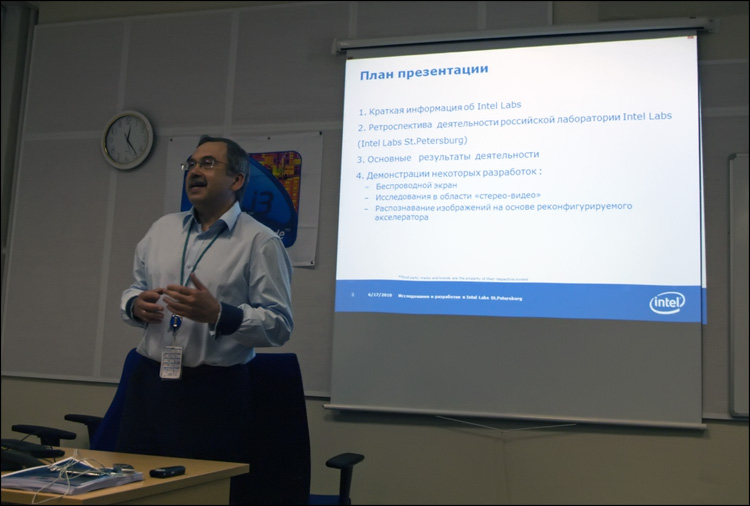
The practical part began with a demonstration of the capabilities of this particular technology. Imagine a table, two data transmission devices ... and a picture that is transmitted without any wires from one computer to another.
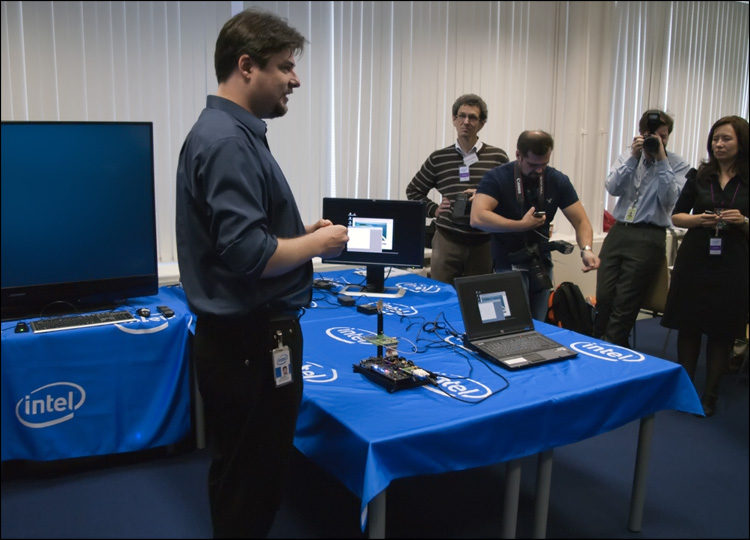
Unknown devices were used as receivers-transmitters, and they were unassembled - a small motherboard mounted on a special stand; some counters, a cooler over the main chip and, in fact, an antenna. And a similar device at the end of the table - if you cover the antenna with your hands, various miracles began to happen with the video signal.
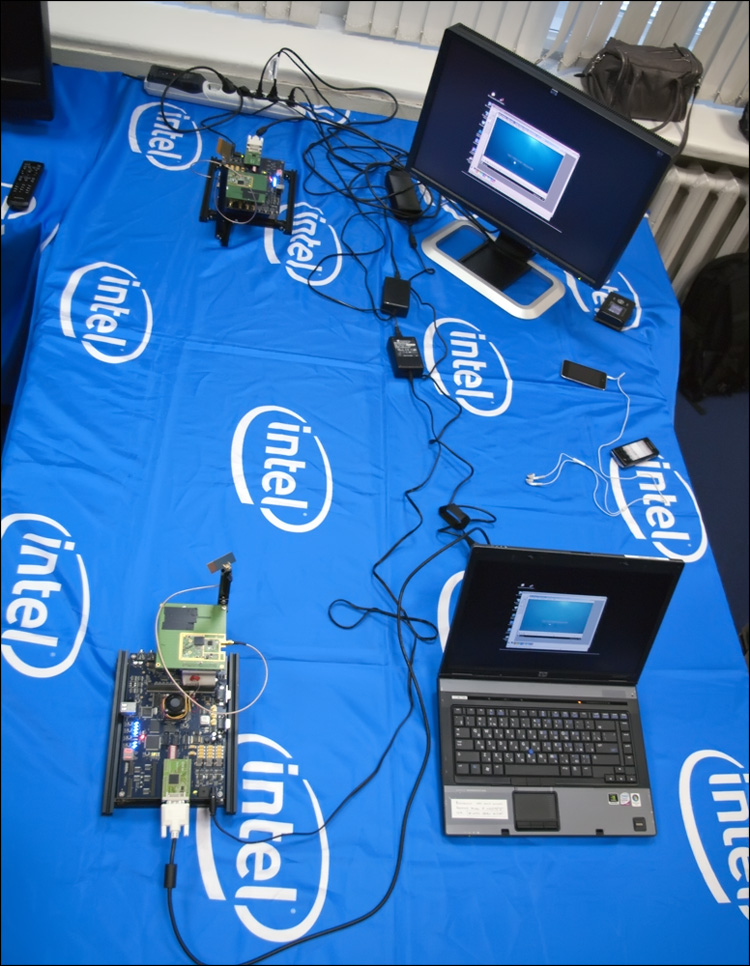
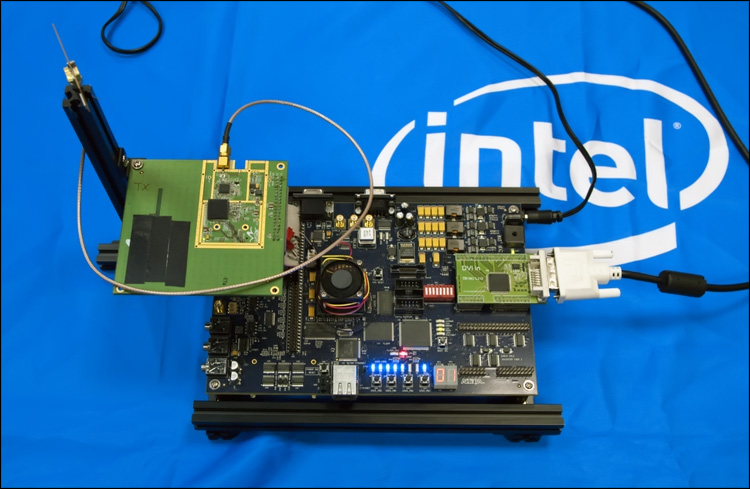
At the moment, as already known, high-resolution video (720p) can be easily transmitted with a delay of about 0.02 seconds - the mouse movements on one monitor were completely synchronous with the movements of the cursor on another. According to one of the technicians, other available methods of wireless data transmission delay at least 0.6 seconds. Unfortunately, he didn’t give a clear answer to the specialist’s question “when will it all be on sale?”, But apparently, it’s not long to wait.
The second part of the demonstration was devoted to the development of the company in the field of three-dimensional image, or rather, stereoscopic. Habitual glasses Nvidia 3D Vision, a huge 120 Hz panel and a laptop from which the image was displayed. At the moment, several laboratory workers are working on a so-called “image depth map”, thanks to which it is possible to change the parameters of a picture in near real time. So, for example, several video clips were shown, in which any “unscheduled” objects were moving away or approaching (as a result of the work of a special algorithm) - you see, we very soon reach the point thatgirls from cartoons and films will not only be seen in 3D, but also be able to twist-twist. In general, very funny.
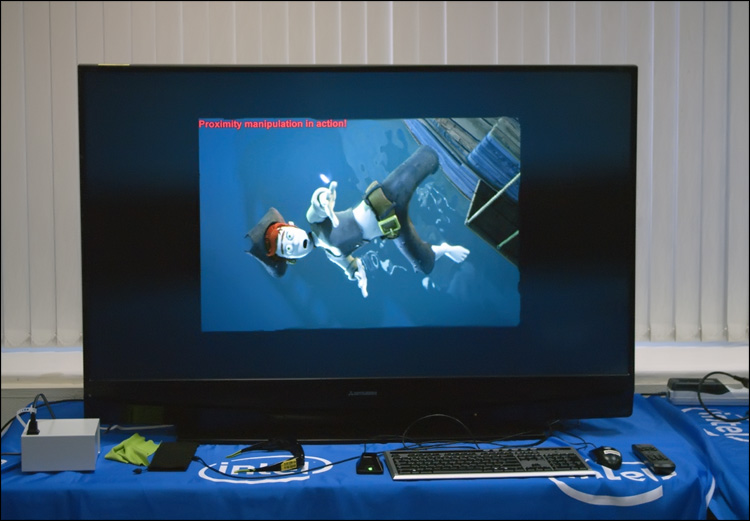
Well, the last demo example concerned developments related to image recognition based on a reconfigurable accelerator. Monitor, the simplest webcam and ... and the subject for which she carefully watched. The object of observation was the first object that came to hand, namely the “Intel” tablet - it was moved in every possible way in space, twisted and twisted - everything remained under the control of the system. Where can this be applied? For example, to ensure safety in the metro and shops, to monitor the expensive cars, or elsewhere, there are plenty of application options.
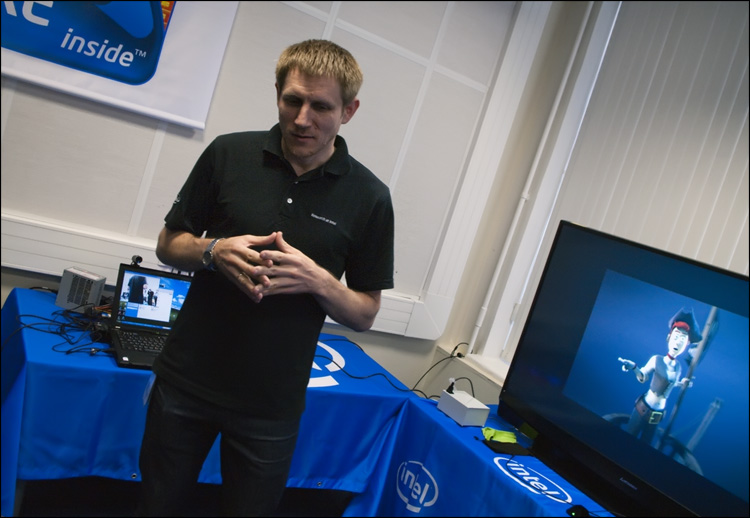


A little later, we went to one of the lab rooms, where there were a lot of laptops, various digital oscilloscopes and other attributes of the lab - this, of course, is not the same as in fantastic foreign films ... but also not at all what I've seen in the departments and laboratories of several technical universities) By the way, about universities, according to Oleg Semenov, there is active cooperation with them (GUAP, SPSU, MSU, Polytech). For example, several students have summer practice there and, in fact, are full-fledged members of the laboratory.
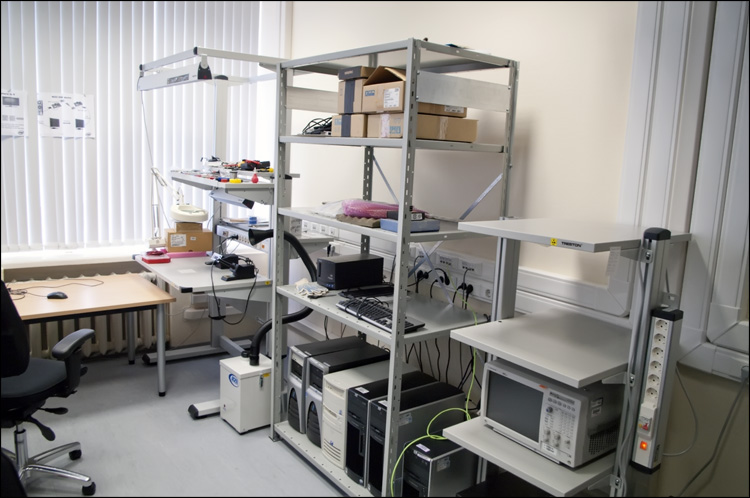
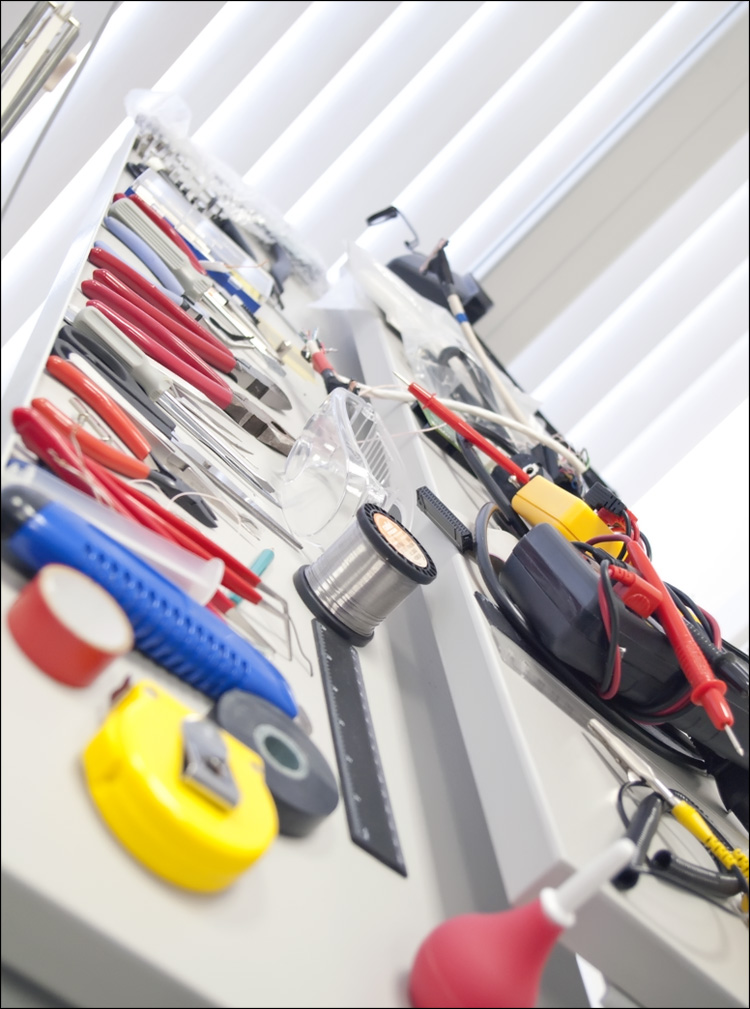
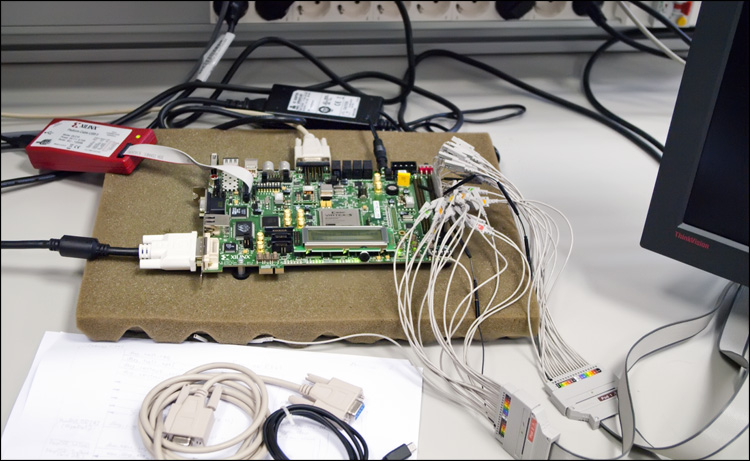
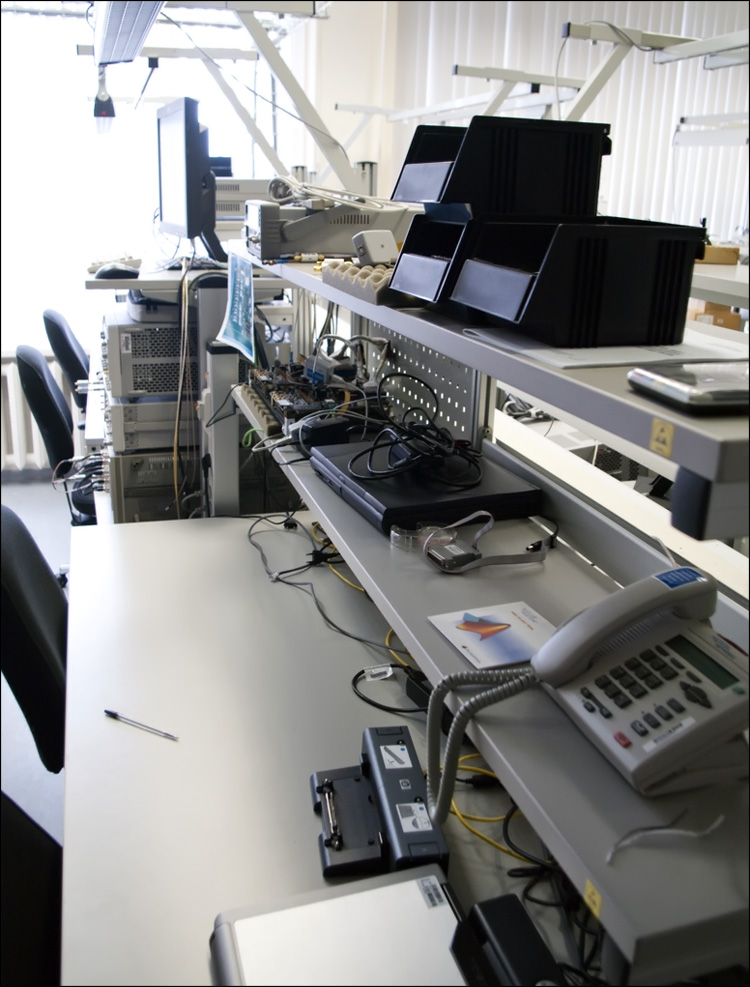

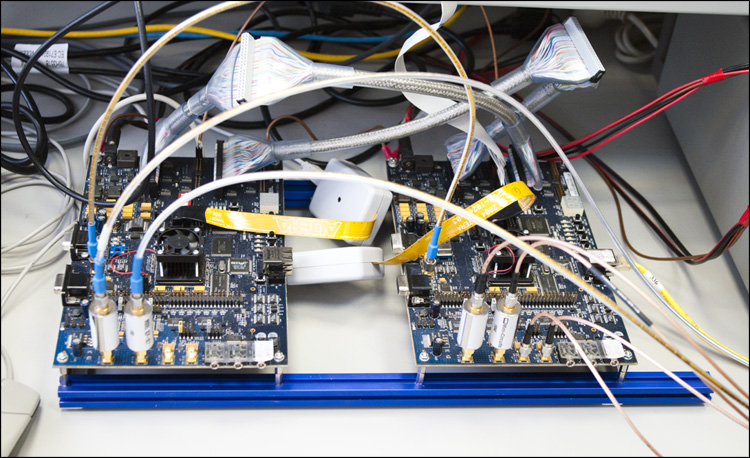
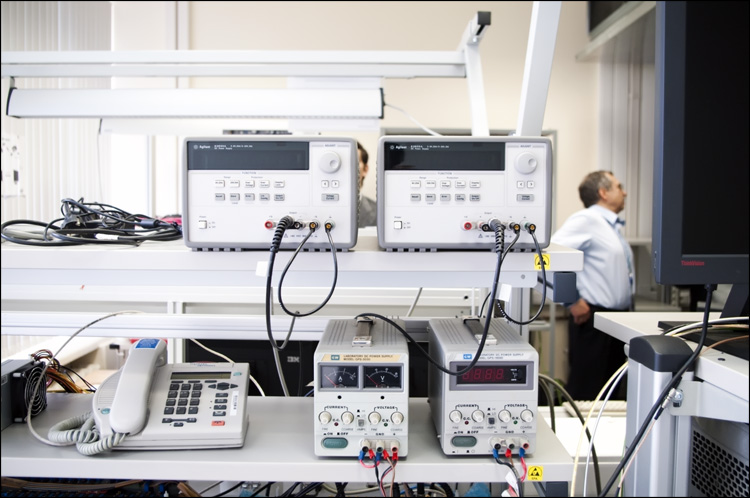
And what, at one time, I would prefer to practice with Intel, rather than sit down at the department, which was engaged in completely uninteresting "developments".
* * *
As a bonus, we were shown the only prototype of the tablet on the new Moorestown platform, running under the MeeGo operating system. I will try to review it soon - stay in touch and do not forget to connect to the company's blog on the site!
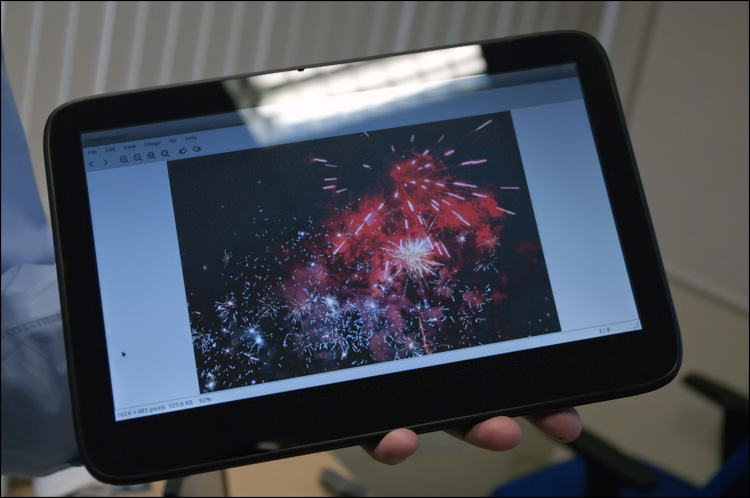
To be continued.

It all started with a speech by Christian Morales , Vice President, Sales and Marketing Group, General Manager of Operations in the EMEA region. He flew to our cold lands for a number of meetings at the Economic Forum , but before the event, he told us about what the term "Intel Labs" really is.

')
It was about a more global Intel Labs Europe (ILE), which, in fact, is a large interconnected network of research laboratories, developing various innovations and promoting their practical implementation. “The development of innovative and“ breakthrough ”technologies that bring new opportunities in the context of the ongoing“ digital ”revolution is like a nutrient medium for the development of the company's business.”

Currently, research laboratories are located in more than 10 large countries and more than 900 research workers are involved in a very wide range of different developments, including architectures of future computing systems, devices and platforms; telecommunications and media processing; research in the field of circuits and semiconductors; optical methods for storing and transmitting information; human-computer interfaces, high-performance systems, and more.

Developments are carried out in a large number of areas, but their main vectors can be seen in the photo (clickable):

Accordingly, in each of the laboratories something different is being developed, however, it is also available to other laboratories.





Moreover, the development is carried out not only around the "mature" technologies that are close to the release of finished products, but also over the so-called "blue-sky" projects, which include promising projects that are currently not possible to implement. As an example, the technology was given to recognize human thoughts, as well as their ability to influence something.
The St. Petersburg Intel Lab employs about 30 people and Oleg Semenov is their manager - he said that over the entire existence of the laboratory, more than 65 patents were filed, and the number of applications for inventions has long exceeded 200. Some of the “fields” of their activities are tools for system-on-chip (SoC) synthesis and programming, efficient accelerator architectures for various applications, video signal compression and processing algorithms, development of experimental WiFi / WiMAX chips, and a promising interface, introduced Intel at the beginning of this year at CES2010. Yes, yes, it's about the Intel Wireless Display .

The practical part began with a demonstration of the capabilities of this particular technology. Imagine a table, two data transmission devices ... and a picture that is transmitted without any wires from one computer to another.

Unknown devices were used as receivers-transmitters, and they were unassembled - a small motherboard mounted on a special stand; some counters, a cooler over the main chip and, in fact, an antenna. And a similar device at the end of the table - if you cover the antenna with your hands, various miracles began to happen with the video signal.


At the moment, as already known, high-resolution video (720p) can be easily transmitted with a delay of about 0.02 seconds - the mouse movements on one monitor were completely synchronous with the movements of the cursor on another. According to one of the technicians, other available methods of wireless data transmission delay at least 0.6 seconds. Unfortunately, he didn’t give a clear answer to the specialist’s question “when will it all be on sale?”, But apparently, it’s not long to wait.
The second part of the demonstration was devoted to the development of the company in the field of three-dimensional image, or rather, stereoscopic. Habitual glasses Nvidia 3D Vision, a huge 120 Hz panel and a laptop from which the image was displayed. At the moment, several laboratory workers are working on a so-called “image depth map”, thanks to which it is possible to change the parameters of a picture in near real time. So, for example, several video clips were shown, in which any “unscheduled” objects were moving away or approaching (as a result of the work of a special algorithm) - you see, we very soon reach the point that

Well, the last demo example concerned developments related to image recognition based on a reconfigurable accelerator. Monitor, the simplest webcam and ... and the subject for which she carefully watched. The object of observation was the first object that came to hand, namely the “Intel” tablet - it was moved in every possible way in space, twisted and twisted - everything remained under the control of the system. Where can this be applied? For example, to ensure safety in the metro and shops, to monitor the expensive cars, or elsewhere, there are plenty of application options.



A little later, we went to one of the lab rooms, where there were a lot of laptops, various digital oscilloscopes and other attributes of the lab - this, of course, is not the same as in fantastic foreign films ... but also not at all what I've seen in the departments and laboratories of several technical universities) By the way, about universities, according to Oleg Semenov, there is active cooperation with them (GUAP, SPSU, MSU, Polytech). For example, several students have summer practice there and, in fact, are full-fledged members of the laboratory.







And what, at one time, I would prefer to practice with Intel, rather than sit down at the department, which was engaged in completely uninteresting "developments".
* * *
As a bonus, we were shown the only prototype of the tablet on the new Moorestown platform, running under the MeeGo operating system. I will try to review it soon - stay in touch and do not forget to connect to the company's blog on the site!

To be continued.
Source: https://habr.com/ru/post/97264/
All Articles